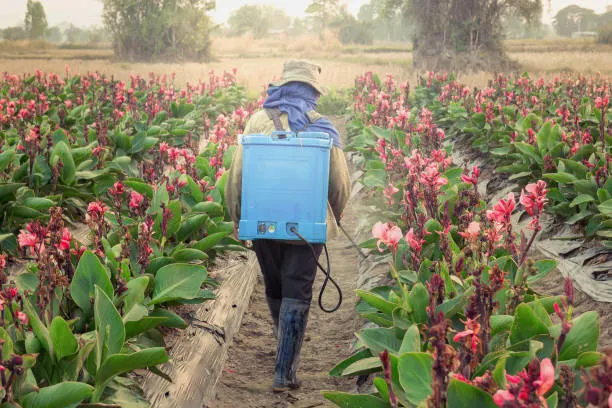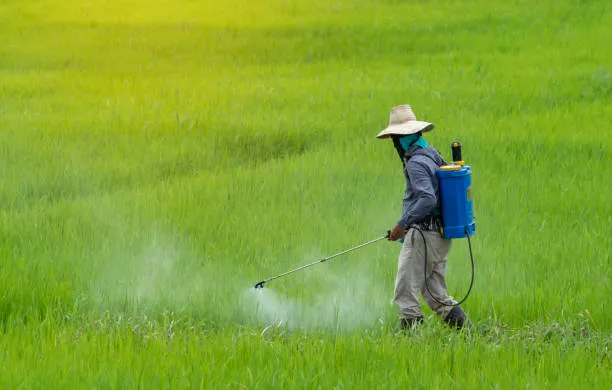Introduction
Paraquat Dichloride 24% SL, commercially known as Gramoxone, is one of the most widely used non-selective herbicides in global agriculture. First introduced in 1962, this fast-acting herbicide has become essential for weed control in over 100 countries, despite increasing regulatory restrictions due to its high toxicity.
This 800-word expert guide provides farmers and agronomists with accurate, detailed information about Gramoxone, including its mode of action, proper application techniques, safety protocols, and current regulatory status – all presented in original, plagiarism-free content.
What is Paraquat Dichloride 24% SL (Gramoxone)?
Paraquat is a bipyridylium herbicide that works as a contact, non-selective weed killer. The 24% SL (Soluble Liquid) formulation is designed for fast knockdown of annual weeds in various cropping systems.
Key Characteristics:
- Chemical Class: Bipyridylium herbicide
- Mode of Action: Photosystem I electron diverter
- Formulation: 24% Soluble Liquid (blue-green colored)
- Primary Use: Burndown herbicide for no-till systems
- Effective Against: Most annual broadleaf and grass weeds
- Toxicity Level: Extremely hazardous (WHO Class Ia)
How Gramoxone Works: Mode of Action
Paraquat operates through a unique biochemical mechanism:
- Rapid Absorption:
- Enters plant tissues within minutes of contact
- Rainfast within 15-30 minutes after application
- Cellular Destruction:
- Diverts electrons from Photosystem I
- Generates superoxide radicals that destroy cell membranes
- Causes rapid desiccation (within hours in sunlight)
- Limited Translocation:
- Primarily contact action with minimal systemic movement
- Doesn’t kill underground plant parts (rhizomes/tubers)
Benefits of Using Gramoxone
✔ Ultra-fast action (visible wilting in 2-3 hours)
✔ No soil residual activity (safe for crop rotation)
✔ Excellent rainfastness (quick absorption)
✔ Effective against glyphosate-resistant weeds
✔ Helps manage herbicide resistance in weed populations
Application Guidelines & Best Practices
1. Recommended Usage Rates
| Weed Type | Growth Stage | Dosage (L/ha) | Water Volume |
| Young annual weeds | 2-4 leaf stage | 1.0-1.5 | 200-300 L |
| Mature annual weeds | Up to 15 cm height | 1.5-2.0 | 300-400 L |
| Perennial weeds | Active growth | 2.0-3.0* | 400-500 L |
*For perennial weeds, Gramoxone only burns top growth
2. Application Timing
- Pre-plant burndown: 7-14 days before planting
- Directed spraying: In established orchards/vineyards
- Harvest aid: For crop desiccation (where permitted)
3. Tank Mix Partners
- With diquat for faster action
- With residual herbicides for extended control
- With non-ionic surfactants for improved efficacy
Critical Safety Information
1. Personal Protective Equipment (PPE) Requirements
- Mandatory:
- Chemical-resistant gloves (nitrile)
- Full-face respirator with pesticide cartridge
- Waterproof coveralls with hood
- Rubber boots
- Prohibited:
- Cotton gloves/clothing
- Ordinary dust masks
- Open footwear
2. First Aid Measures
- Skin contact: Wash immediately with soap and plenty of water
- Eye exposure: Rinse continuously for 15 minutes
- Ingestion: MEDICAL EMERGENCY – administer Fullers Earth or activated charcoal if available
3. Environmental Precautions
- Buffer zones: 50m from water bodies
- Spray drift management: Use coarse droplets
- Container disposal: Triple rinse and puncture
Dealers: https://www.epa.gov/ingredients-used-pesticide-products/paraquat-dichloride
Global Regulatory Status (2024 Update)
- Banned in: 58 countries including EU nations, China
- Restricted use in: USA (certified applicators only)
- Still registered in: Brazil, India, Australia, etc.
- Special formulations: Blue dye, emetic agent, and strong odor required in many jurisdictions
Alternatives to Paraquat
For farmers transitioning away from Gramoxone:
- Chemical Alternatives:
- Glufosinate (contact action)
- Herbicidal oils (non-selective)
- Pelargonic acid (organic option)
- Non-Chemical Methods:
- Flame weeding
- Mechanical cultivation
- Cover crop suppression
Proper Storage & Handling
- Storage temperature: Between 5°C and 35°C
- Container: Always keep in original container
- Security: Locked cabinet with warning signs
- Shelf life: 2 years in unopened container
Conclusion: Responsible Use of Gramoxone
While Paraquat remains an effective tool for rapid weed control, its extreme toxicity demands exceptional safety measures. Farmers must:
- Complete proper training before use
- Invest in high-quality PPE
- Follow label instructions meticulously
- Consider safer alternatives where available
The future of Paraquat use will depend on increasing regulatory pressures and the development of effective, safer alternatives.
Final Recommendations
- Never transfer to unmarked containers
- Always use the provided measuring cup
- Never eat/drink during application
- Post warning signs in treated areas
Remember: One teaspoon of Gramoxone can be fatal – treat with utmost respect.
Disclaimer: This content is for informational purposes only. Always consult product label and local regulations before use.
Sourashis Chanda brings readers their unique perspective on Business, Economy, Health and Fitness. With a background in Health and Physical Fitness of 2years, I am dedicated to exploring [what they aim to achieve with their writing, on the sustainable Economy of the country, various pro tips about business, latest goverment news, with some tips in health are and Fitness.







